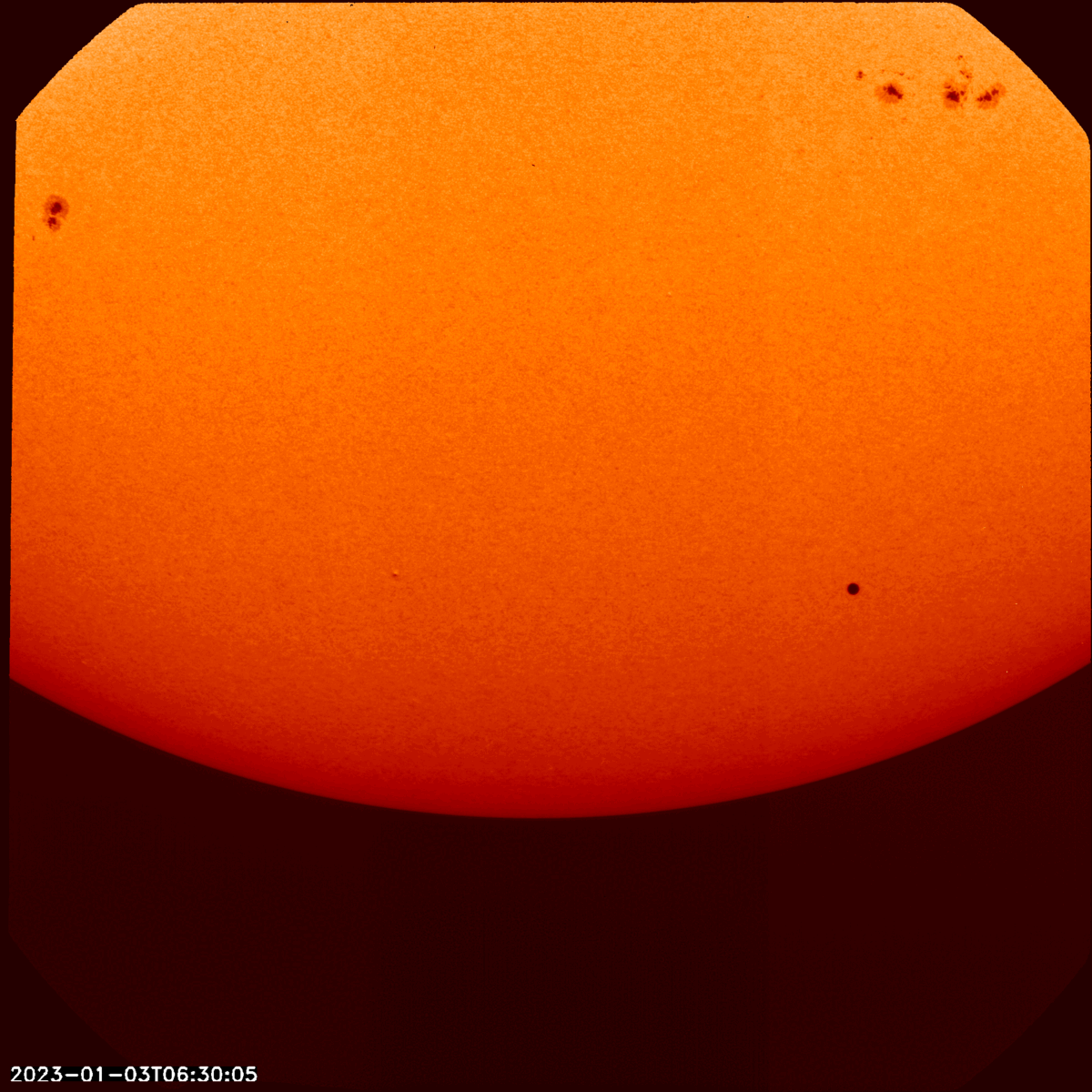The European Space Agency has published the results of observing the passage of the smallest planet
The researchers used various toolsspacecraft to observe the movement of the planet through the various layers of the solar atmosphere. For example, the Extreme Ultraviolet Imager (a device for imaging ultraviolet radiation) showed the movement of Mercury above the solar corona immediately after it left the disk and became visible against the background of gaseous structures in the Sun's atmosphere.
Observing the transit using the Extreme Ultraviolet Imager. Video: ESA & NASA/Solar Orbiter/EUI Team
The main movement of the planet along the solar diskobtained using the Polarimetric and Helioseismic Imager device (polarimetric and helioseismic scanner). It processes data in visible light and is intended primarily for studying seismic activity on a star and its magnetic fields.
In the video, Mercury is a black dot that moves across the disk of the star for three hours. At the same time, the shadow of the planet differs significantly from sunspots.
 Observing the transit of Mercury using Polarimetric and Helioseismic Imager. Animation: ESA & NASA/Solar Orbiter/PHI Team
Observing the transit of Mercury using Polarimetric and Helioseismic Imager. Animation: ESA & NASA/Solar Orbiter/PHI Team
This observation is a by-product of the workspace probe. The main task of Solar Orbiter is to study the solar atmosphere. The engineers used this transit event in order to calibrate the instruments. Earlier, Solar Orbiter took a picture of the Sun's corona in record resolution.
Read more:
Land in China drilled to a record depth
It's not about the Earth: scientists explained why the solar system is the rarest
Giraffe mating is even stranger than previously thought